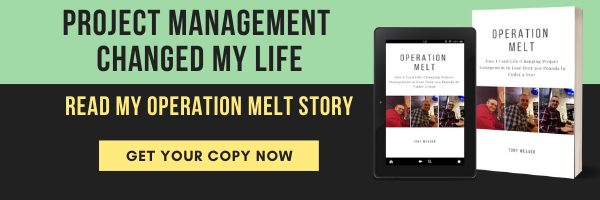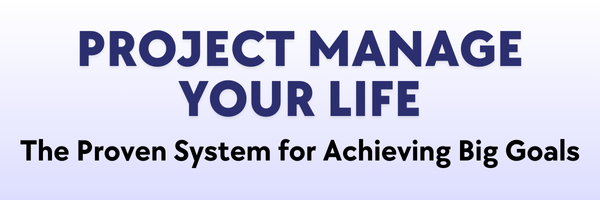I am a believer in the power of project management.
As a professional project manager for twenty years, I have witnessed project success drive business results. I have also proven that project management can change lives and help achieve personal transformation. Now I am sharing some practical tips and techniques that you can use to help achieve your own personal goals, live your best life and become a PM Believer.
“It’s Just” … Uh Oh, Could Be Hidden Changer Danger
Sometimes a small change can result in a major failure. Consider the following story that illustrates this point.
Monica was the project manager for her company’s major e-commerce website launch. This project had been in progress for about a year and was on track to launch in just three months. The financial plan for the new site expects a sales increase of at least twenty thousand dollars per day beginning on launch day. This will significantly impact the company, and everybody was eagerly waiting for launch day.
The project had just entered the final two weeks of build followed by sixty days of testing, an aggressive testing schedule for such a big project. This was when Monica got a call from Joey, one of her friends in the marketing department. The marketing team had just completed a few months of customer focus groups. One of the outcomes was a request for one additional feature to be added to the website, which isn’t currently included in the new site.
Monica explained to Joey that there are just two more weeks of build and that it is too late to take on new requirements. This was when Joey started pleading his case. “C’mon Mon, it’s just a very minor addition,” he said. He continued, “I already talked about it with Rachel, your lead developer. She said it would be like fifteen minutes of work and that she already has it mostly built, but she needs your approval to add it.” Then he really gave the hard sell, “this would be such a big win for you and the company. My boss is super excited about the new feature, and I told her that I would talk to you. I said that you are such a great partner and friend that you could certainly make this happen.”
Monica reluctantly agreed and added the feature to the project. Unfortunately, Rachel didn’t know the requirements and what she had “mostly built” ended up not being what was needed. Due to lots of back and forth on requirements, the build took four additional weeks to finish. The team tried to keep the launch on track by shortening the testing time, but the new feature ended up causing numerous tests to fail and rework to be needed.
The website ended up launching three months late, missing the peak holiday season. The result was nearly a million dollars of lost sales. The executive sponsor, Chandler, was very angry and asked Monica how this happened; she explained the last-minute feature addition. Chandler called Joey’s boss, Phoebe, to ask why this feature was so important, and she said that it was only a nice-to-have. She would never have expected it to be added if it risked the project.
As you can imagine, Monica now works at a different company owned by her brother, Ross.
This story is an example of what project managers are asked to do every day. In a big project, lots of stakeholders want to achieve lots of things. They often don’t want to wait, and they want to take advantage of your project to get what they want.
Saying “no” is often difficult for a project manager who wants all stakeholders to be happy. But, this story was full of red flag comments that indicated that “yes” was not the right answer. Hint: they are shown in red.
Change control processes are a tool to help alleviate this struggle and could have changed the ending of this story. When Joey asked for the new feature, Monica should have said, “we can evaluate it, but we need to follow our change control process.” Then Monica would have worked with Joey to document the request (a change request) and with the team to evaluate the impact of adding this feature (impact analysis). Then, equipped with facts about the costs and benefits, the project sponsor can decide (change control board). In this case, Chandler and Phoebe would have almost certainly said no, and the project would have launched on time.
What’s this story have to do with personal goal projects? I am glad you asked!
Changes are going to happen throughout our lives. We can’t stop that. But, pausing to consider the reality of the change and what it requires from you can save major headaches down the road.
For example, consider a project where you commit to losing twenty-five pounds in the next six months. That is a fairly ambitious goal, but probably one you can achieve with the right commitment and effort.
Note: Please understand that I am making a ton of assumptions here for the sake of the story. Also, this conceptually applies to all kinds of goals, not just weight loss.
When you reach the three-month mark, you see that you are well ahead of schedule. So, you decide to change your goal. Now you are going to lose fifty pounds in six months. The six-month point arrives, and you are down forty pounds but didn’t achieve your revised goal. You are disappointed and get frustrated. You give up and regain most of the weight you lost.
What could you have done differently? When you saw that you were significantly ahead of schedule, you had a choice to make.
- You could have retained your original goal, achieved it, celebrated, gained momentum and then worked to continue trying to lose more weight.
- You could have consulted your doctor to ask whether fifty pounds was a reasonable expectation for six months. This would have provided you with the facts about whether it was a good idea to adjust your goal.
- You could have just assumed that you could reach the new goal, thrown out your original commitment and possibly failed. Which you did!
By considering the facts and your options before deciding to change your personal goal project, you can make a disciplined change. But, by simply rolling with the change before evaluating it, you trust your goal to default and the autopilot behaviors that are often a recipe for disaster.
"Disciplined behaviors mean pausing to consider what behaviors, choices, or actions are needed from you at that moment. Embracing a life of disciplined behaviors is a big step to making your dreams come true, one decision at a time." Discipline Not Default (8/22/2021)
I want you to succeed with your goals and make all of your dreams come true. Don’t let “Changer Danger” jeopardize your progress.
Do you need a partner to help you evaluate your change? I’ll be there for you!
Click Here to learn more about my Operation Melt coaching services.
Breathe new life into your goals
Download my free ebook to learn how to create goals that actually work and get the jump-start you need in life!






